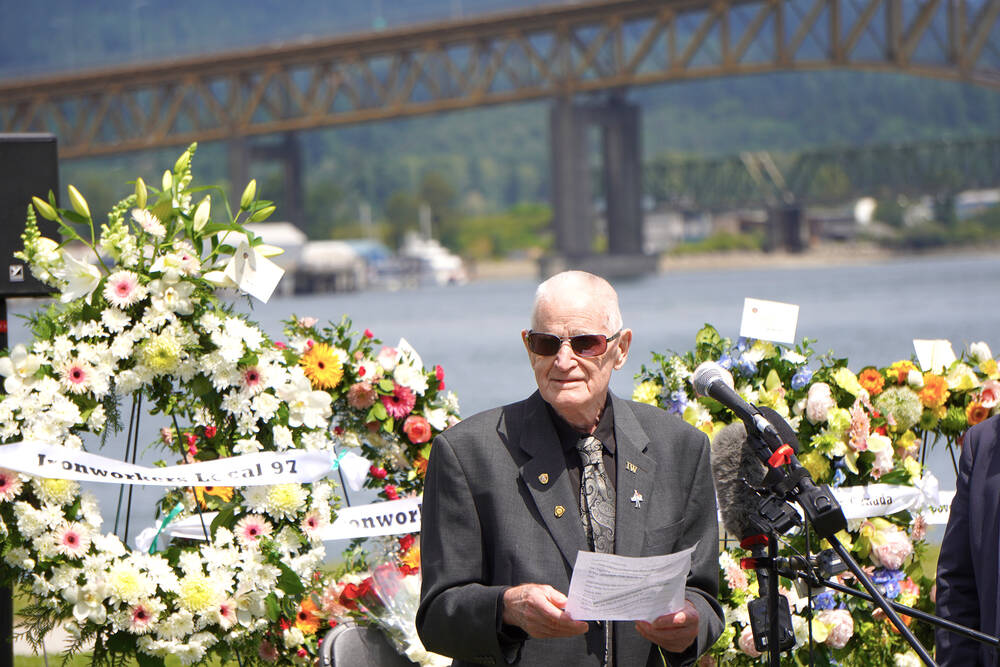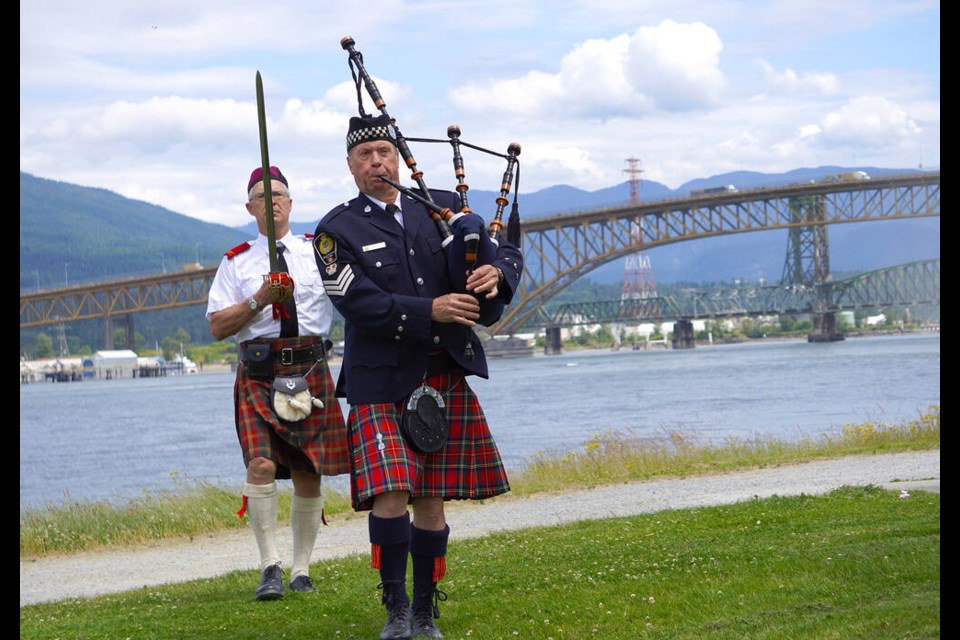After 67 years, the last living survivor of the Second Narrows Bridge collapse says his memories are fading. To Lucien Lessard, 96, it means the duty of remembrance for the workers killed must be upheld by the rest of us.
Dozens of iron workers, labour organization members and dignitaries gathered in New Brighton Park in Vancouver Tuesday to mark the anniversary of B.C.’s worst ever industrial disaster.
As one of the survivors, Lessard was among the Iron Workers Local 97 members who first began annual commemoration events that eventually led to the North Shore’ busiest bridge being officially renamed the Ironworkers Memorial Second Narrows Crossing.
“I have stretched my life to the limit. I don’t think I have any more memorials that I will be there to attend, and while I am still alive, I want the chance to say thank you to all the people that they have organized and the attended memorials to remember the 19 men that lost their lives that day and their families,” he said.
In keeping with a tradition started by Lessard’s daughter, he passed an iron rose to an apprentice iron worker, who now works on construction of the new Pattullo Bridge, symbolizing the continuity of remembrance and the commitment to worker safety.
On the day of the disaster, 18 workers were killed. A diver attempting to recover one of the bodies was lost soon after, and four more workers died before construction was completed.

“They were fathers, sons, brothers and friends. They were proud tradesmen, skilled iron workers, who showed up to do a dangerous job that helped shape the city and its future,” said Paul Beacom, Iron Workers Local 97 president. “Their work was hard, their risks were great and their sacrifice was immense.”
The bridge’s collapse was due to a mathematical error in the design drawings that wasn’t caught by plan checkers. A temporary support beam that had been cut too short buckled, causing much of the rest of the still-under-construction bridge to collapse.
Lessard fell more than 150 feet to the water below, breaking his femur and arm. He was hospitalized for months, and it was more than a year before he could return to work.
Although the collapse of the bridge lives in the collective memory of Metro Vancouver, one of its most important legacies is less talked about, said Brynn Bourke, executive director of the BC Building Trades Council. When survivors of the disaster were ordered back to work to fix the mangled bridge just a few days later, they refused, a galvanizing moment in B.C. labour history.
“This tragedy happened at a time when workers’ rights were minimal,” she said, noting union members and leaders faced fines and jailtime for defying court orders to return to the job. “I think we should always tell that part of the story, because it didn’t just end with an accident. There was an accident and then there was an employer that was saying, ‘Now, just get back to work. Just do this job.’ And it took extraordinary bravery from these workers to stand up and demand better.”
Beacom also took the opportunity to pay tribute to the late Phil Nuytten, the North Vancouver inventor and undersea explorer who, at just 16, was one of the first divers in the water working to rescue the injured and recover the dead. Nuytten passed away in 2023.
“He remained a friend of the iron workers and a supporter of this memorial throughout his life,” he said. “We honor his courage, his commitment. Rest in peace, brother. We are grateful you were there.”
B.C. Labour Minister Jenifer Whiteside said June 17 remains “a very solemn day for a whole province.”
“That is something that I think about every time I drive over that bridge. I think about what is the work that we are doing to make sure that we never see an accident like that, or any other accident that kills a worker,” she said. “I get up every single day thinking about that and working and planning and pushing government.”




